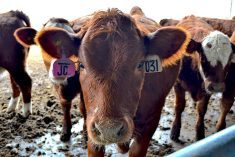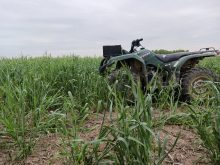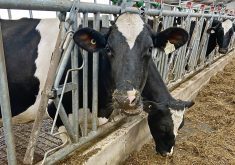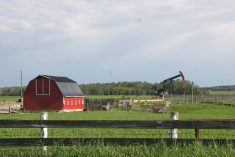An Alberta judge recommends the province lift the exemption that excludes farms’ paid workers from provincial workplace safety regulations.
Provincial Court Judge Peter Barley included that recommendation among several in his fatality inquiry into the June 2006 death of High River-area farm worker Kevan Chandler.
Chandler, 35, died while trying to clear hung-up grain inside a silo at Tongue Creek Feeders. Barley’s report from the inquiry into Chandler’s death was submitted last month to provincial Attorney General Alison Redford.
Barley, in his recommendations, reiterated that no one should enter a silo beneath the top level of the grain inside, unless the grain is resting at an angle of less than 45 degrees.
Read Also

Swarm mapping the future of drone imagery
Calgary-based Threshold UAV wins the $20,000 top prize at Ag Innovation Awards for their swarm drone mapping.
“There must always be at least one person outside the silo when another person is inside cleaning,” Barley wrote. “This allows them to watch for signs of trouble, signal for assistance if needed, and start immediate attempts at rescue.”
In Chandler’s case, the inquiry heard in October, he and a coworker had been trying to remove grain stuck to the walls of a silo. The co-worker left briefly to get a longer pole for Chandler, who was inside the silo, and returned to find the grain had fallen in, smothering Chandler.
Barley also recommended that written hazard assessment forms should be prepared for use each time an activity known to be dangerous is undertaken by an employee on a farm. “The results of the undertaking should be recorded and kept available for review,” he wrote.
SHOULD BE COVERED
Barley also recommended that “paid employees on farms should be covered by the Occupational Health and Safety Act… with the same exemption for family members and other non-paid workers that apply to non-farm employers.”
Barley said an entity like the provincial employment and immigration department, if it investigated farm worker deaths to the same extent that it investigates non-farm employment deaths, would “obviously have far greater ability to make meaningful recommendations to improve workplace safety on the farm than any entity hearing the facts of a single fatality.”
If the workplace safety and health standards for paid farm work were recommended by a committee that included farmers, then the “collective experience and knowledge could be set out in a manner that could be accessed by everyone with an interest in the activity.”
In short, he wrote, “this would allow employers to know what standards would make their workplace safe, and to insist that their employees meet that standard.”
Barley said his inquiry heard “many farms are family-run operations, part home and part workplace. Since a non-farmer working at home is not covered by the Occupational Health and Safety Act, it was felt by many farmers that they should be exempt for the same reason.”
That said, Barley added, “no logical explanation was given as to why paid employees on a farm are not covered by the same workplace legislation as non-farm employees.”














